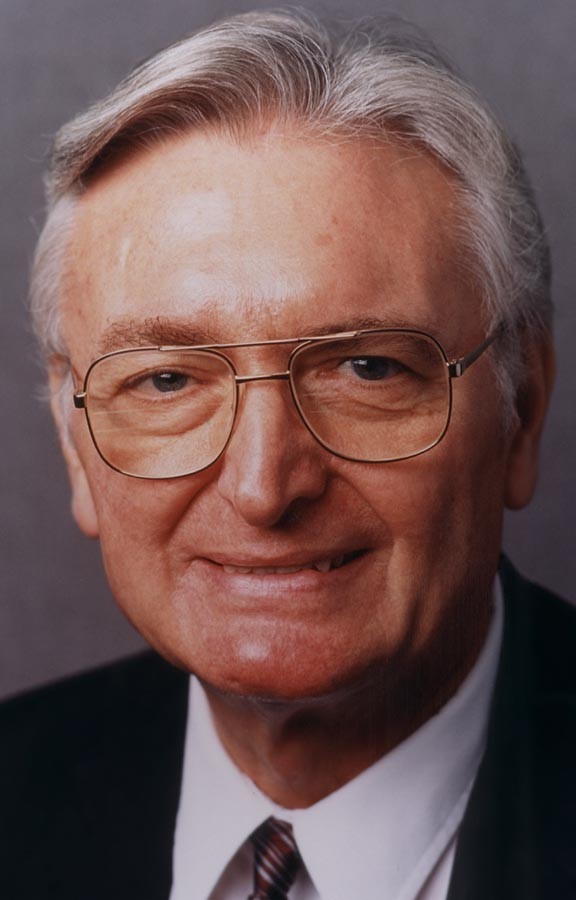
|
In 1957, Joseph Lannutti came to Florida State University to start
the first High Energy Physics (HEP) group in the southeastern
United States.
The HEP group, the physics department, and the Tallahassee Scientific
Society host
an
annual lecture in memory of Prof. Lannutti.
The physics department gives an annual award for undergraduate
research named in Prof. Lannutti's honor.
|
Born in Pennsylvania in 1926, Joseph E. Lannutti was drafted into
the US Army during World War II. At the end of the war he used
the GI Bill to study physics. He obtained his B.S. degree from
Pennsylvania State University, his M.S. degree from the University of
Pennsylvania and his Ph.D. degree from University of California, Berkeley.
Upon graduation he came to The Florida State University in 1957 to
establish the High Energy Physics research program.
His initial focus was the study of strange particles using emulsions.
In the early sixties he switched to bubble chamber physics and focused
on pion and kaon interactions. In the early seventies he took an interest
in counter experiments and performed several at Fermilab, where he was
the spokesman for the phi-phi(?) experiment using the Fermilab
Multi-Particle Spectrometer. After the Fermilab experiment he joined the ALEPH
experiment at CERN. During these periods he trained many of his colleagues and
students in both the fine points of experimental physics as well as making
us excellent teachers.
He was elected and appointed to many national committees, including
the Board of Trustees of the University Research Association (URA)
that operates Fermilab, the DOE High Energy Physics Advisory Panel
(HEPAP) and several other committees. These committee works
got him interested in the demographic of scientist and engineers
and the projected deficit of qualified scientists. In 1981 he proposed
an Engineering College at Florida State University and convinced the
Board of Regents and the Florida State Legislature to start such a
program. In 1982 he started the Engineering College as a joint project
between Florida State University and Florida A&M University. A very
patient man and a diplomat par excellence he managed to bring together
these two very diverse universities with very different missions to
work together in establishing this college. He served as
the first Dean and at the same time he was appointed as
Associate Vice President for Research at FSU. He hired all
the initial faculty of the engineering
college and helped the individual faculty members start
world class research programs. The college now has over 2,000
students and awards BS, MS and PhD degrees in all of the
traditional fields of Engineering.
In the early 1980's, there were very few supercomputers available
to US Universities. In 1984 he proposed to acquire such a
computer and created the Supercomputer
Computational Research Institute (SCRI) as a joint venture between
the US Government, The State of Florida and Industry. The institute
was funded and about 40 research scientists and faculty were recruited.
He guided this institute for nine years as its first director.
His interest next shifted to the world supply of food. During his last
years his effort was directed to creating a research institute for
Marine Aquaculture to grow and harvest fish in large ocean farms
in the Gulf of Mexico.
Joe Lannutti was a person who was able to accomplish tasks that to
many was an impossible undertaking. He showed that a physicist could
become successful in any enterprise. He will be remembered as a
person who was willing to take extremely complex challenges and
bring it to conclusion, whether it was an high energy
physics experiment or the founding of an institute.
- adapted from text by Sharon and Vasken Hagopian and Joseph Owens
for Physics Today, 1997.
Created Aug. 29, 2011 - TA, modified Aug. 30, 2011 - TA
|

